Technology and happiness
Is it possible in our time to live without technological devices - in everyday life called "gadgets" - and remain happy?
Directed by Dmitry Vasyukov claims that yes, because with such people he is familiar not by hearsay. The documentary filmmaker made a 4-part film about them “ Happy people. Yenisei ”, continuing the cycle with 2 serial“ Pomors ”.
To say that "happy people" live very much in the Stone Age, it is impossible. Of course, it is easier with equipment - it is both boat engines, and snowmobiles, and chainsaws.
')
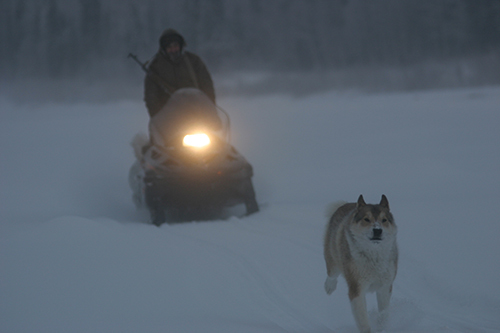
True, the film has an important author's addition:
“The technique here is complex - on the one hand respectful, on the other - hunters do not want to depend on it. After all, any equipment breaks down, needs repair, spare parts. You can, of course, order it ... but only when they come, these parts! Not earlier than in 3-4 months. Therefore, the main tool is still an ax. The ax in the taiga is always at hand. ”
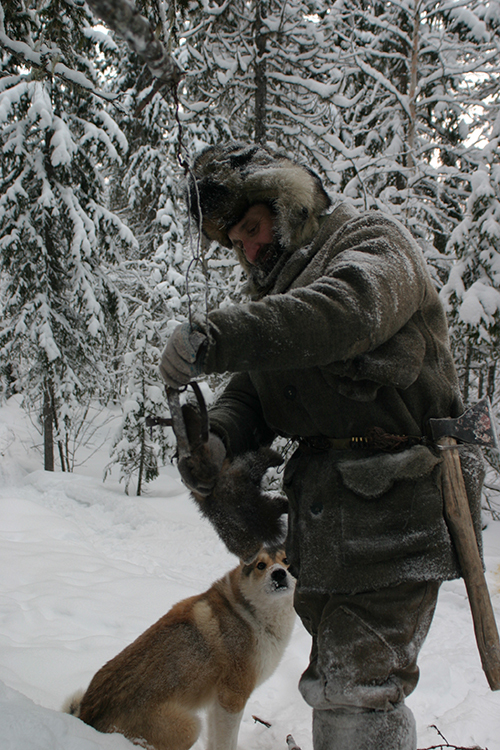
“When I found out,” says the director, “that the fishing grounds in size (1000 sq. Km) are comparable to the area of a huge metropolis, I reasonably, it seemed to me, asked why the hunters do not use GPS? How convenient it would be to score the coordinates of all the traps and traps in the taiga! The answer was short: “I don’t want to get used to it!” But the truth is, if you consider that you can lose the device or forget that batteries in hard frost quickly sit down and there is no place to charge them, then hunters can be understood. ”
In the film "Pomors" in the episode about the inhabitants of the distant village of Moseevo, located on the river Peza, the conversation about high technologies is still going on.
“The fact is , we hear the voice-over of the author, that these remote places lie on the course of the flight of rockets from the Plesetsk cosmodrome. As the speed increases, the spent rocket stages fall to the ground across the northeast Pomerania.

And the locals then pick them up and let them in again. Different parts of the missiles go for different needs: sleighs, baskets, snowmobile trailers. But fuel tanks are in the greatest demand; here the metal is even and thinner. From these tanks make boats. In the 60s, when there were many launches, so many missiles fell in the district, that even entire teams were mobilized in Moseevo to search for and collect them. Now the rockets fly less often, the metal is running out, and, taking this opportunity, the Moseev men ask to convey to the government their concern about the state of the space industry! ”
However, the heroes of the tape live in the absence of high technology turned out to be in many ways easier than the director to make his films about this life. Today, Vasyukov, preparing for the production of a new picture - now about the “happy people” of Altai - shared some of the “secrets” from his accumulated shooting experience.
“The main paradox of the technology of creating such films,” the director tells about filming on the Yenisei, “this is precisely anti-technology from the point of view of modern filmmaking. Our small film crew (I and the cameraman) knew perfectly well that there was a wary attitude towards strangers, and even with the camera, in the outback. To make such a film, you have to live and work there - without this complete trust in you will not. Therefore, we bought a house in Bakhta where we lived for a year: chopped wood, went for water, mined burbot and soon became our own people for the local residents. ”

There were, of course, purely technical difficulties, which we had to face at every step, taking pictures in conditions of severe nature.

“We shot on two Sonya 170 and Z-1, with mini dv cassettes. The ribbon tape froze, and we kept the cameras on the sledges in the canvas tent, where a gasoline lamp smoldered, and instead of 45 degrees outside, it was still 25 times warmer.
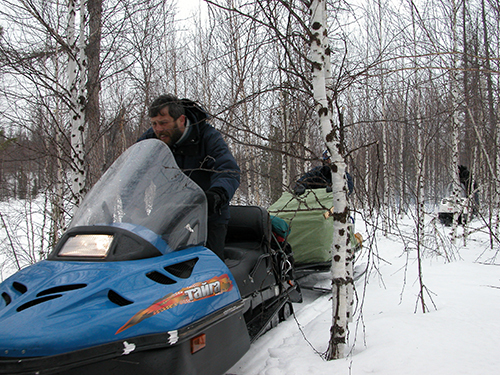
In this house on the sled we transported all the equipment in the winter. Ibid carried with them and the generator.

When they wrote long "synchronous" and put a small light, they took the generator 50 meters from the hut, dug a lair for it in the snow, then covered it with cardboard and lapnik and covered it with snow so that the noise of the motor would not interfere with sound recording. "

The group had no less problems with underwater shots.
“We shot under the ice in April, when the ice is still thick, but the sun is already high and warm. We had a wet wetsuit 8mm, balloon and compressor. They put a tent on the ice, inside - a burner that was warming water in a bucket.

The operator, Lesha Matveyev, changed clothes, and we, through the fishing lane, lowered him on the ropes under the ice. Then I asked our heroes to do all the manipulations with the nets and the fish, which can be removed from under the ice.

It’s a pity, a lot of good shots were rejected due to the fact that the air bubbles that came out of the aqualung "climbed" into the frame. Alexey had to pull out every 6-8 minutes.
A bucket of hot water was poured over him through the gate into the wetsuit, after which he was allowed to drink 100 grams of vodka, and he climbed into the ice (somewhere + 4) water to shoot the next shots. These are high technologies.
But, by the way, in the summer it was also not easy to shoot underwater. The biggest problem was, oddly enough, midge. Understood it not immediately. They inserted a camera (the same “Sonya” 170 only without a handle) into the underwater case, filmed, looked at the material - and in the foreground, against the background of a floating fish, flies crawling! It turned out that while you put the camera in the box, a huge amount of midges are stuffed in there. How to get rid of it, if there is not a single room, wherever it was? They found the solution: they got into the boat, accelerated on the engine so that the insects could be blown away by the wind, and at that moment they pushed the camera into the box. "
Taking pictures of animals, especially fish, is always very difficult. Western film studios spend huge amounts of time and money on such filming. And the technical equipment is completely different. Still, the Vasyukov group managed to do something.
“Taimen is a very rare and beautiful Siberian fish. It is difficult to find him, let alone take it off under water. But local fishermen are knowledgeable people. They said that in the heat of the taimen, like cold-water fish, they gather in the places where mountain streams with ice-cold water flow into the river. There we found them. But how to remove, after swimming away! We blocked the stream with a dam of stones, and when a large dam was formed, we were caught in the river
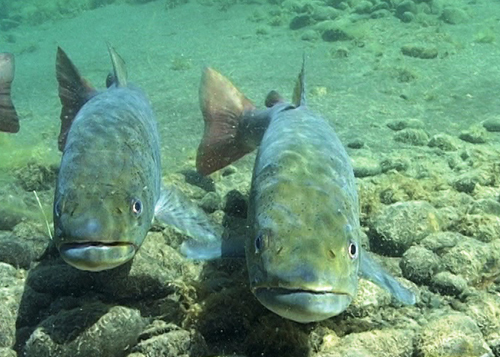
several taimen and launched them into this dam along with the operator. The viewer had the full feeling that the fish were free. The taimi themselves, being in their midst with our operator, were absolutely not afraid of him and allowed even to stroke themselves.
Other fish we shot in the "aquarium" of fastened together half meter plexiglass canvases.
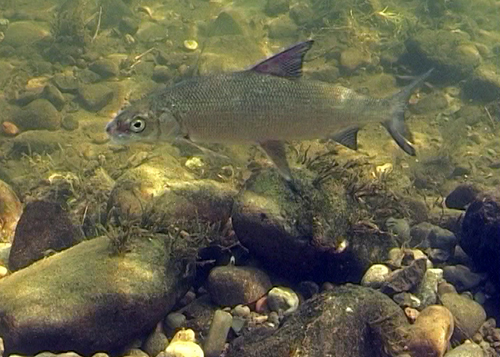
We brought this transparent cell into the water, and the bottom of it was the natural bottom of the river. They caught various fish, took them to a cage, and then released them into the wild. I am proud to say that we have not eaten a single “artist”! ”
Separate attention deserve, of course, aerial shooting. They are the most expensive, complex and often dangerous.
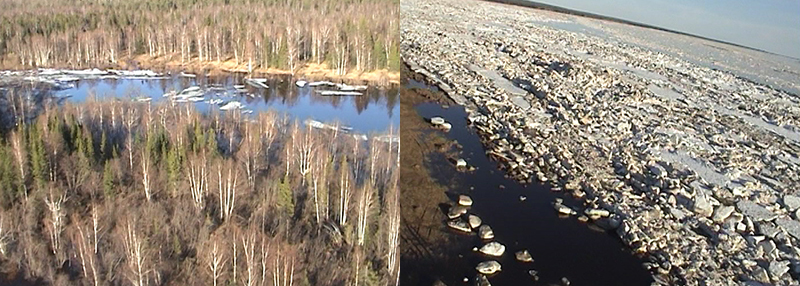
“At the Yenisei, they removed from a double trike, which the children were brought to the village by pilots from Krasnoyarsk. They were shooting from two cameras: one was fixed on the skate of the apparatus, the other was held by the operator. It soon became clear that the camera on the skate receives a strong vibration from the running motor. Therefore, it was necessary to ask the pilot to turn off the engine after the climb, which was rather risky: there was not always a guarantee that the engine would start again. In general, the hang-glider is full of minuses. It is bulky for transportation, requires a lot of space for take-off and landing, it has great speed and low maneuverability.
We filmed aerial shots of the Pomors from a paralet.
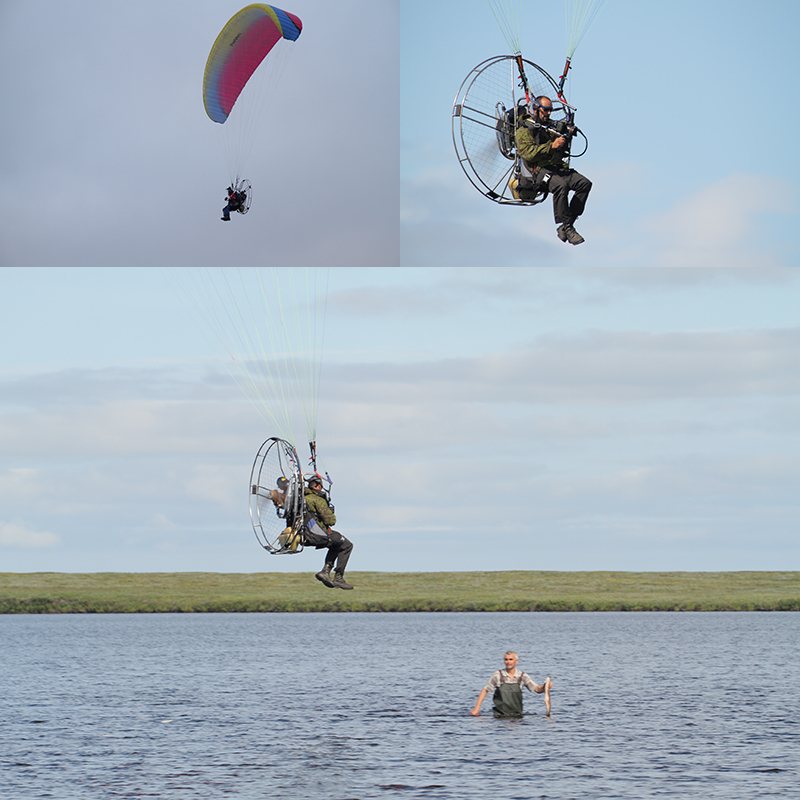
There were difficulties with him too, the main one of which is still the same shaking. ”
The new film has yet to be shot, but Dmitry Vasyukov is already considering how to improve the quality, given that the process will not be easy either. So, in Altai, a radio-controlled quadrocopter will be used, and the shooting from the paralet will be carried out by a camera stabilized with 4 gyroscopes.

D. Vasyukov is again ready to subordinate technology to his directorial tasks, driving technology into unbelievable conditions. Belief in the success of the new project gives future viewers who support the idea of creating such a film with a ruble. For the first time, documentary films collected a record amount for crowdfunding - more than 2,500,000 rubles, and the project continues.
Directed by Dmitry Vasyukov claims that yes, because with such people he is familiar not by hearsay. The documentary filmmaker made a 4-part film about them “ Happy people. Yenisei ”, continuing the cycle with 2 serial“ Pomors ”.
To say that "happy people" live very much in the Stone Age, it is impossible. Of course, it is easier with equipment - it is both boat engines, and snowmobiles, and chainsaws.
')

True, the film has an important author's addition:
“The technique here is complex - on the one hand respectful, on the other - hunters do not want to depend on it. After all, any equipment breaks down, needs repair, spare parts. You can, of course, order it ... but only when they come, these parts! Not earlier than in 3-4 months. Therefore, the main tool is still an ax. The ax in the taiga is always at hand. ”

“When I found out,” says the director, “that the fishing grounds in size (1000 sq. Km) are comparable to the area of a huge metropolis, I reasonably, it seemed to me, asked why the hunters do not use GPS? How convenient it would be to score the coordinates of all the traps and traps in the taiga! The answer was short: “I don’t want to get used to it!” But the truth is, if you consider that you can lose the device or forget that batteries in hard frost quickly sit down and there is no place to charge them, then hunters can be understood. ”
In the film "Pomors" in the episode about the inhabitants of the distant village of Moseevo, located on the river Peza, the conversation about high technologies is still going on.
“The fact is , we hear the voice-over of the author, that these remote places lie on the course of the flight of rockets from the Plesetsk cosmodrome. As the speed increases, the spent rocket stages fall to the ground across the northeast Pomerania.

And the locals then pick them up and let them in again. Different parts of the missiles go for different needs: sleighs, baskets, snowmobile trailers. But fuel tanks are in the greatest demand; here the metal is even and thinner. From these tanks make boats. In the 60s, when there were many launches, so many missiles fell in the district, that even entire teams were mobilized in Moseevo to search for and collect them. Now the rockets fly less often, the metal is running out, and, taking this opportunity, the Moseev men ask to convey to the government their concern about the state of the space industry! ”
However, the heroes of the tape live in the absence of high technology turned out to be in many ways easier than the director to make his films about this life. Today, Vasyukov, preparing for the production of a new picture - now about the “happy people” of Altai - shared some of the “secrets” from his accumulated shooting experience.
“The main paradox of the technology of creating such films,” the director tells about filming on the Yenisei, “this is precisely anti-technology from the point of view of modern filmmaking. Our small film crew (I and the cameraman) knew perfectly well that there was a wary attitude towards strangers, and even with the camera, in the outback. To make such a film, you have to live and work there - without this complete trust in you will not. Therefore, we bought a house in Bakhta where we lived for a year: chopped wood, went for water, mined burbot and soon became our own people for the local residents. ”

There were, of course, purely technical difficulties, which we had to face at every step, taking pictures in conditions of severe nature.

“We shot on two Sonya 170 and Z-1, with mini dv cassettes. The ribbon tape froze, and we kept the cameras on the sledges in the canvas tent, where a gasoline lamp smoldered, and instead of 45 degrees outside, it was still 25 times warmer.

In this house on the sled we transported all the equipment in the winter. Ibid carried with them and the generator.

When they wrote long "synchronous" and put a small light, they took the generator 50 meters from the hut, dug a lair for it in the snow, then covered it with cardboard and lapnik and covered it with snow so that the noise of the motor would not interfere with sound recording. "

The group had no less problems with underwater shots.
“We shot under the ice in April, when the ice is still thick, but the sun is already high and warm. We had a wet wetsuit 8mm, balloon and compressor. They put a tent on the ice, inside - a burner that was warming water in a bucket.

The operator, Lesha Matveyev, changed clothes, and we, through the fishing lane, lowered him on the ropes under the ice. Then I asked our heroes to do all the manipulations with the nets and the fish, which can be removed from under the ice.

It’s a pity, a lot of good shots were rejected due to the fact that the air bubbles that came out of the aqualung "climbed" into the frame. Alexey had to pull out every 6-8 minutes.
A bucket of hot water was poured over him through the gate into the wetsuit, after which he was allowed to drink 100 grams of vodka, and he climbed into the ice (somewhere + 4) water to shoot the next shots. These are high technologies.
But, by the way, in the summer it was also not easy to shoot underwater. The biggest problem was, oddly enough, midge. Understood it not immediately. They inserted a camera (the same “Sonya” 170 only without a handle) into the underwater case, filmed, looked at the material - and in the foreground, against the background of a floating fish, flies crawling! It turned out that while you put the camera in the box, a huge amount of midges are stuffed in there. How to get rid of it, if there is not a single room, wherever it was? They found the solution: they got into the boat, accelerated on the engine so that the insects could be blown away by the wind, and at that moment they pushed the camera into the box. "
Taking pictures of animals, especially fish, is always very difficult. Western film studios spend huge amounts of time and money on such filming. And the technical equipment is completely different. Still, the Vasyukov group managed to do something.
“Taimen is a very rare and beautiful Siberian fish. It is difficult to find him, let alone take it off under water. But local fishermen are knowledgeable people. They said that in the heat of the taimen, like cold-water fish, they gather in the places where mountain streams with ice-cold water flow into the river. There we found them. But how to remove, after swimming away! We blocked the stream with a dam of stones, and when a large dam was formed, we were caught in the river

several taimen and launched them into this dam along with the operator. The viewer had the full feeling that the fish were free. The taimi themselves, being in their midst with our operator, were absolutely not afraid of him and allowed even to stroke themselves.
Other fish we shot in the "aquarium" of fastened together half meter plexiglass canvases.

We brought this transparent cell into the water, and the bottom of it was the natural bottom of the river. They caught various fish, took them to a cage, and then released them into the wild. I am proud to say that we have not eaten a single “artist”! ”
Separate attention deserve, of course, aerial shooting. They are the most expensive, complex and often dangerous.

“At the Yenisei, they removed from a double trike, which the children were brought to the village by pilots from Krasnoyarsk. They were shooting from two cameras: one was fixed on the skate of the apparatus, the other was held by the operator. It soon became clear that the camera on the skate receives a strong vibration from the running motor. Therefore, it was necessary to ask the pilot to turn off the engine after the climb, which was rather risky: there was not always a guarantee that the engine would start again. In general, the hang-glider is full of minuses. It is bulky for transportation, requires a lot of space for take-off and landing, it has great speed and low maneuverability.
We filmed aerial shots of the Pomors from a paralet.

There were difficulties with him too, the main one of which is still the same shaking. ”
The new film has yet to be shot, but Dmitry Vasyukov is already considering how to improve the quality, given that the process will not be easy either. So, in Altai, a radio-controlled quadrocopter will be used, and the shooting from the paralet will be carried out by a camera stabilized with 4 gyroscopes.

D. Vasyukov is again ready to subordinate technology to his directorial tasks, driving technology into unbelievable conditions. Belief in the success of the new project gives future viewers who support the idea of creating such a film with a ruble. For the first time, documentary films collected a record amount for crowdfunding - more than 2,500,000 rubles, and the project continues.
Source: https://habr.com/ru/post/221899/
All Articles